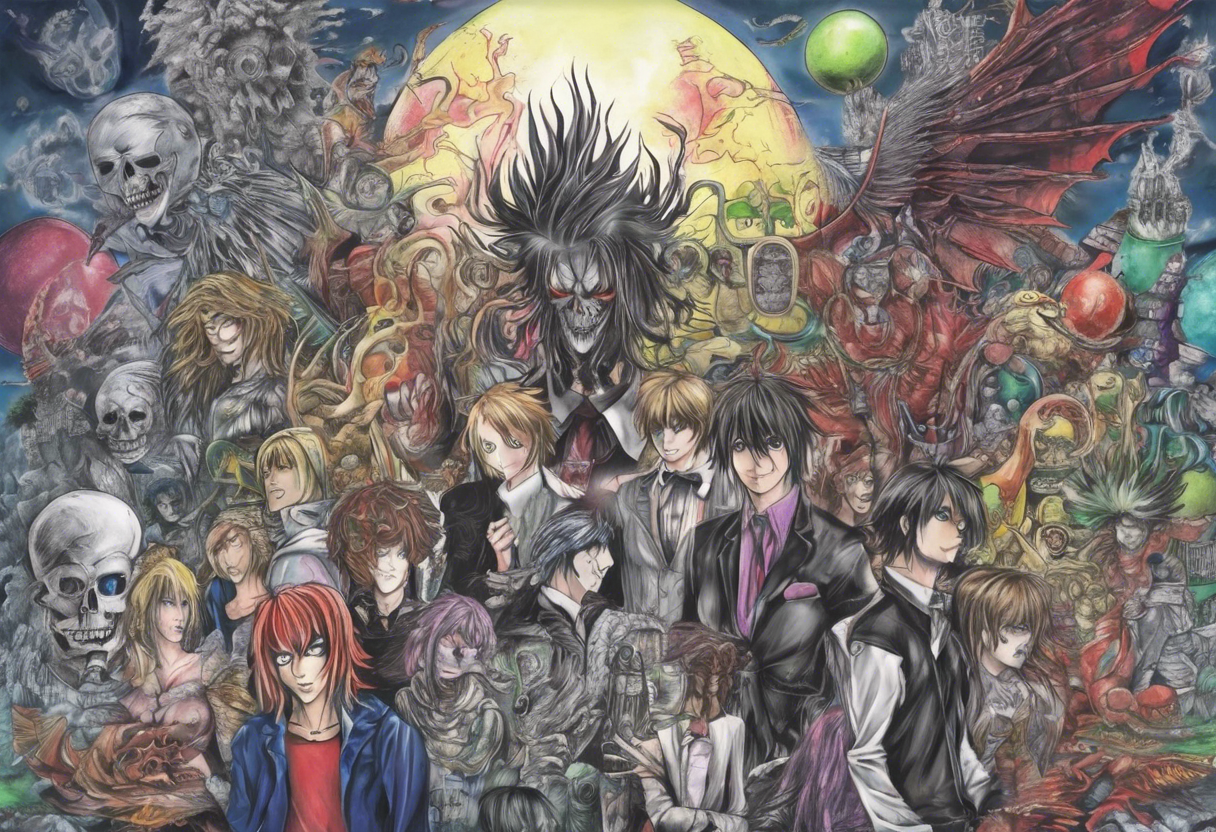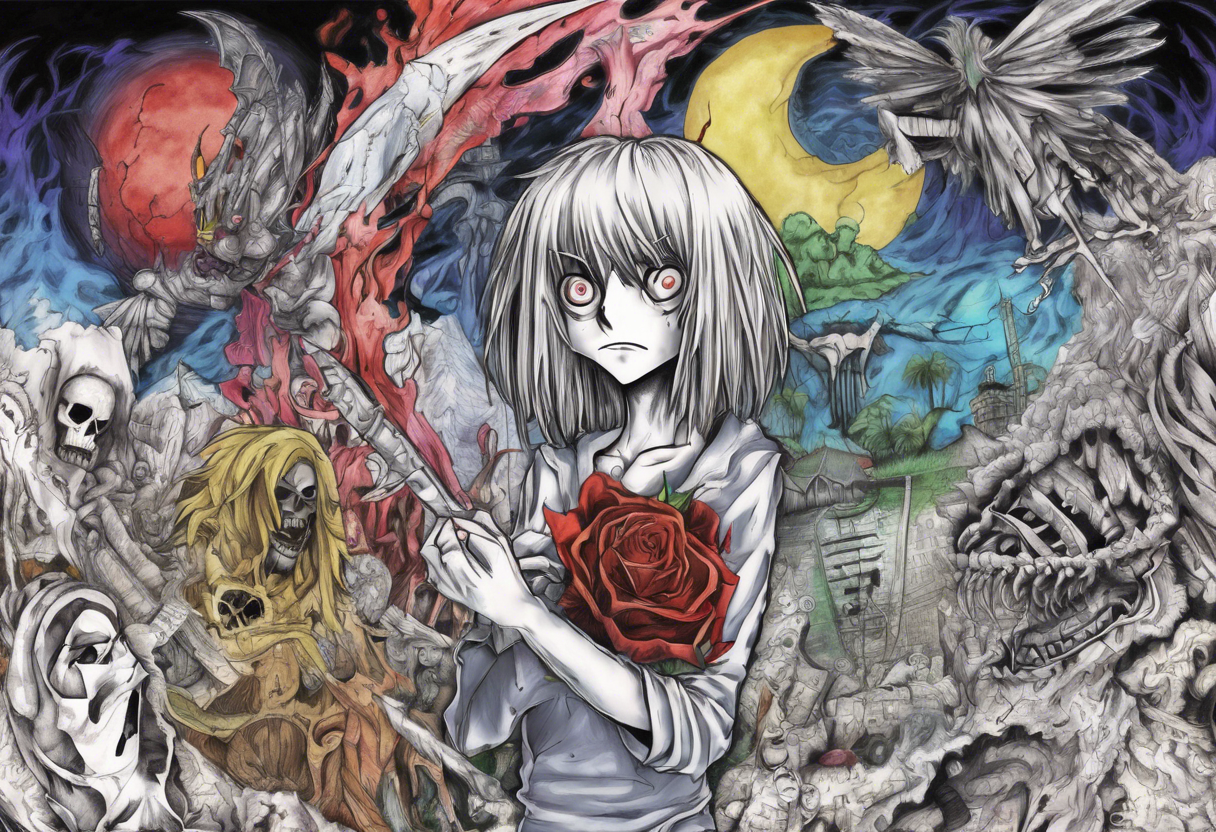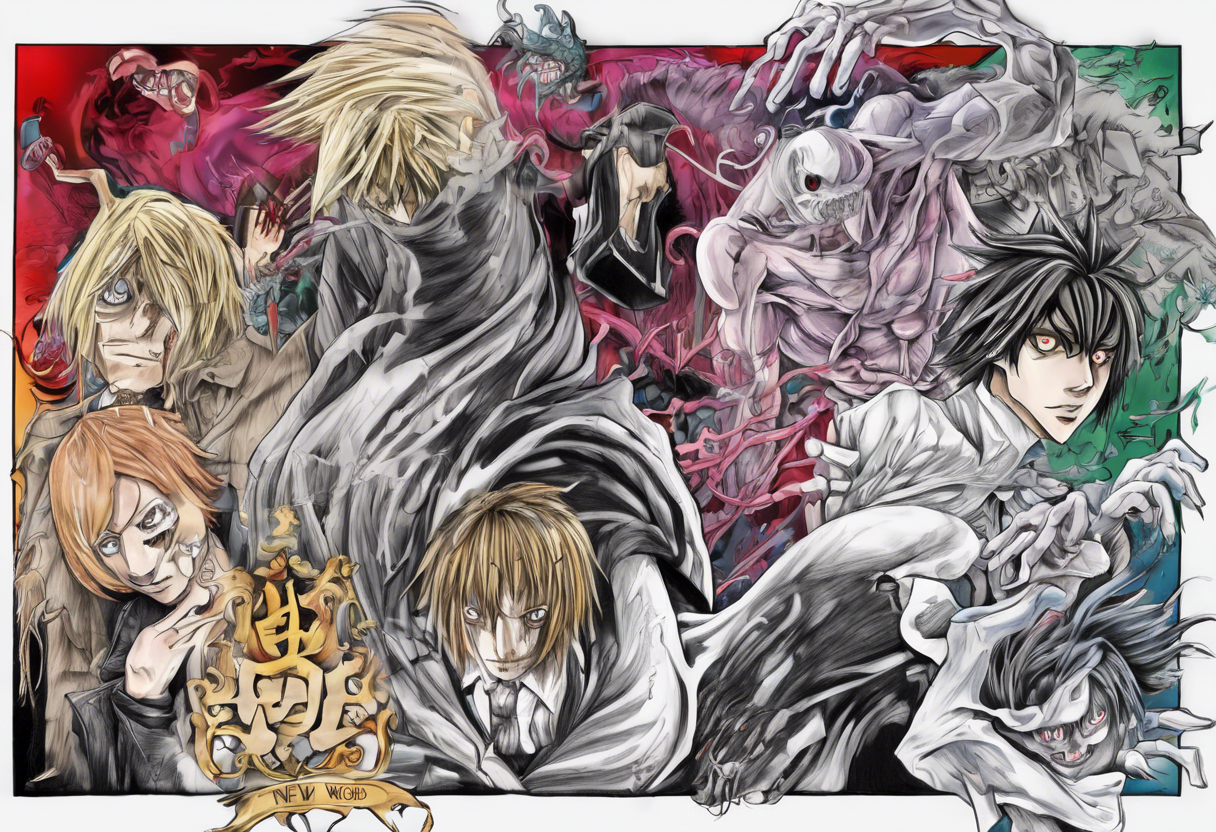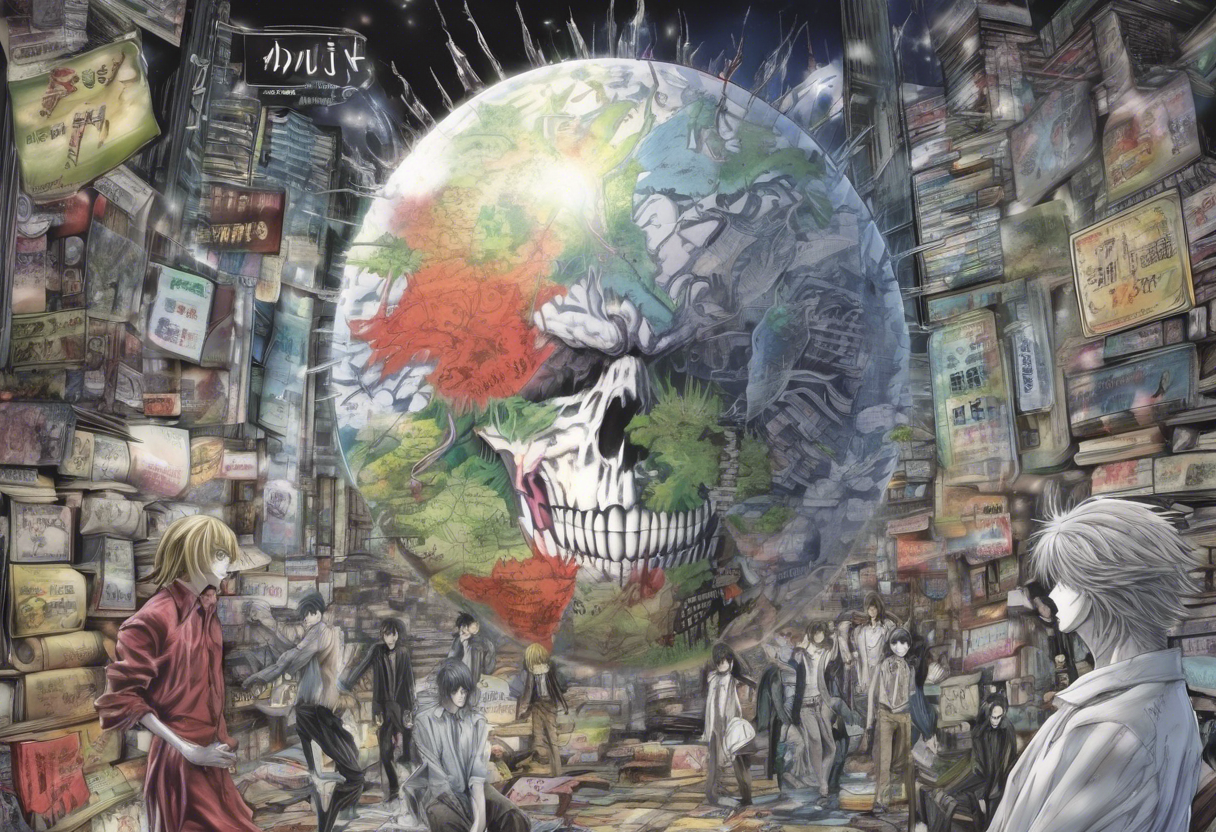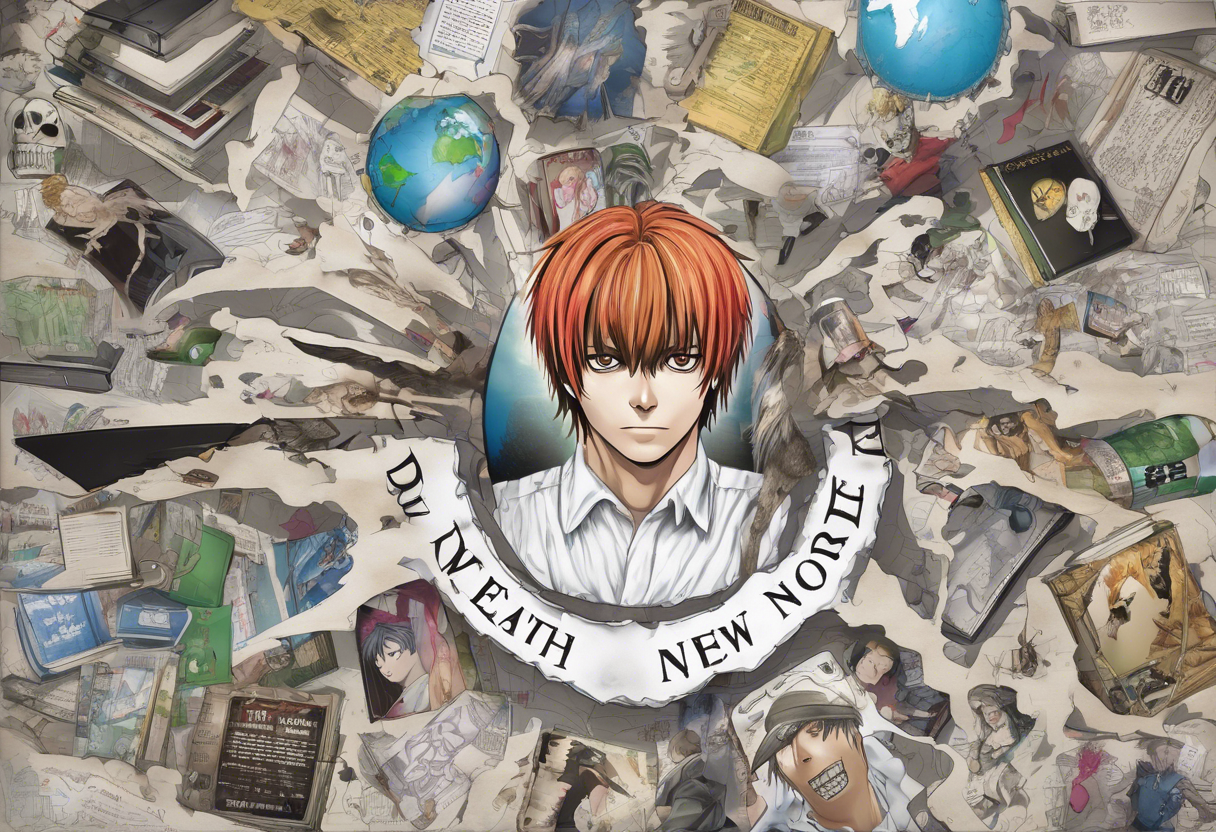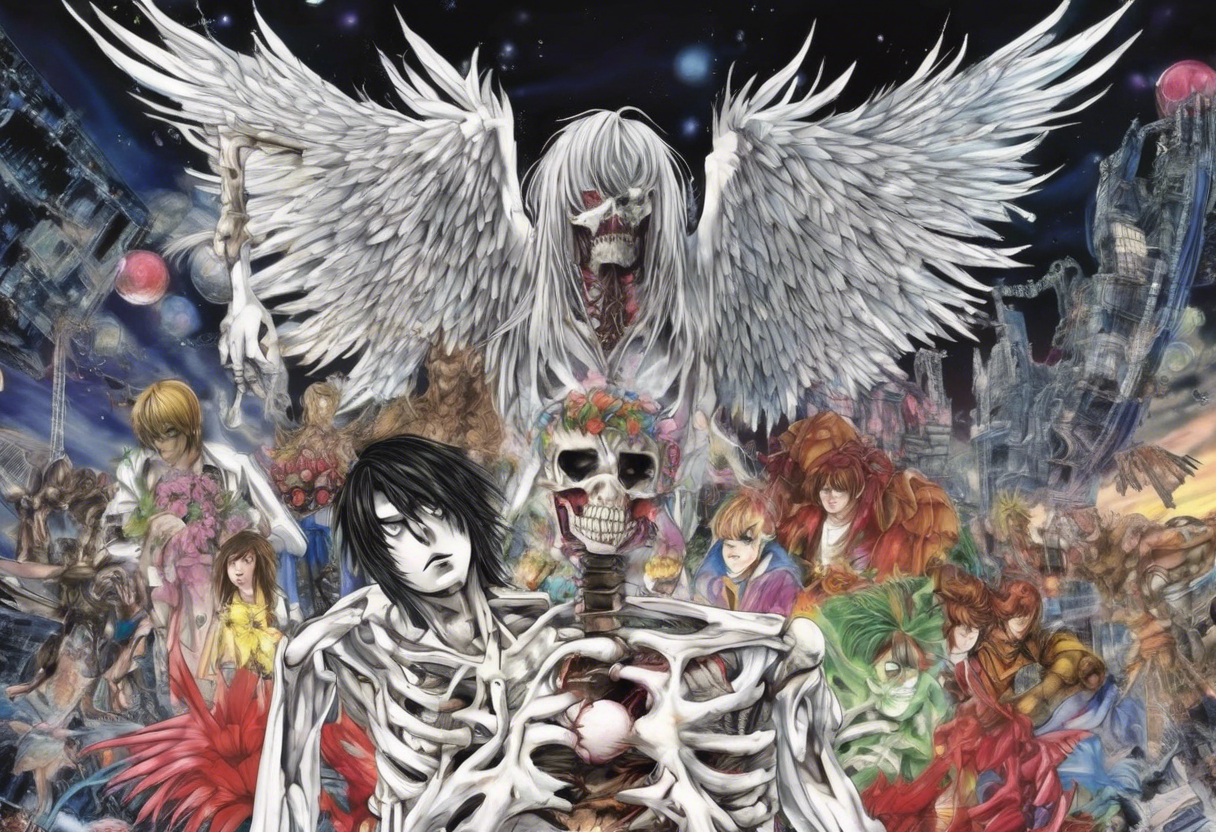Contents
Death Note: Light Up the New World
Introduction
Death Note: Light Up the New World is a 2016 Japanese film that serves as a sequel to the earlier Death Note films, particularly Death Note 2: The Last Name (2006). Directed by Shinsuke Sato and written by Katsunari Mano, the film is based on the manga series Death Note by Tsugumi Ohba and illustrated by Takeshi Obata. Produced by Takahiro Sato and distributed by Warner Bros. Pictures, Light Up the New World premiered in Japan on October 29, 2016, and later in the Philippines on March 15, 2017.
This film stands out within the Death Note franchise for its original storyline, which takes place ten years after the events of the previous films. It introduces new characters and explores themes of cyber-terrorism and the continued impact of the Death Notes on the world. The film’s production and release marked a significant continuation of the Death Note series, appealing to both long-time fans and new audiences.
Plot Summary
The story of Light Up the New World unfolds in a world plagued by cyber-terrorism, ten years after the deaths of Light Yagami (Kira) and L. A series of unexplained deaths suggests that Death Notes are being used again, prompting Interpol to establish the "Death Note Task Force" led by Detective Tsukuru Mishima and L’s biological successor, Ryuzaki.
The Task Force secures a Death Note during a killing spree in Shibuya, where its owner, Sakura Aoi, is killed. Upon touching Aoi’s notebook, they meet Beppo, a Shinigami who reveals that there are six Death Notes currently in the human world, the maximum number that can exist at any time. The Task Force aims to find the remaining five Death Notes.
Meanwhile, Yuki Shien, a cyber-terrorist and Aoi’s killer, seeks to acquire all the Death Notes, believing he is on a mission from Light via his Shinigami, Ryuk. Shien incites global panic with a virus featuring a video of Light as Kira and makes contact with Misa Amane, Light’s former girlfriend and ally. Despite Misa’s refusal to help, Shien uses his hacking skills to locate three Death Notes, killing their owners in the process.
Shien impersonates Kira, threatening a killing spree unless Ryuzaki reveals his name and face. Ryuzaki responds by spreading a CGI video of the original L, aiming to trick Shien into revealing his location. However, Shien anticipates this and escapes, killing one of the original Kira investigators, Touta Matsuda. The Japanese government dissolves the Death Note Task Force, but Mishima and Ryuzaki continue their investigation.
Mishima discovers a hidden message in Ryuzaki’s video, leading him to confront Ryuzaki about his possession of a Death Note. Ryuzaki reveals that his notebook is blank, having promised L he would never use it. The story culminates in a final confrontation where Shien is lured by the promise of revealing Ryuzaki’s face and the team’s Death Notes, resulting in the deaths of several Task Force members and ultimately Misa’s suicide after she acquires "Shinigami Eyes" and helps Shien%[1].
Themes and Symbolism
Light Up the New World delves into several themes that are central to the Death Note series. One of the primary themes is the morality of power and the consequences of playing god. The Death Notes, as instruments of death, symbolize the ultimate power over life and death, and the film explores how different characters wield this power with varying motivations and moral compasses.
The theme of legacy is also prominent, as the film examines the impact of Light Yagami’s actions ten years after his death. The character of Yuki Shien, who believes he is continuing Light’s mission, highlights the enduring influence of Light’s ideology and the danger of blind adherence to a charismatic leader’s vision.
Cyber-terrorism and the intersection of technology and morality are other significant themes. Shien’s use of advanced hacking skills to locate and control the Death Notes reflects the modern world’s vulnerabilities to technological threats and the ethical dilemmas that arise from such capabilities.
The film also touches on the theme of sacrifice and loyalty, particularly through the characters of Misa Amane and Ryuzaki. Misa’s ultimate sacrifice and Ryuzaki’s commitment to his promise to L underscore the complexities of human relationships and the lengths to which individuals will go to uphold their values and protect others%[1].
Cultural Impact
Light Up the New World had a notable cultural impact upon its release, both within Japan and internationally. The film’s blend of psychological thriller elements with sci-fi and action genres resonated with audiences who were familiar with the Death Note series.
The film’s release was part of a broader trend in Japanese cinema that saw a resurgence in adaptations of popular manga and anime series. Light Up the New World contributed to this trend by offering a fresh take on the Death Note universe, appealing to fans who were eager for new stories within the franchise.
The film’s influence can also be seen in its impact on popular culture. The concept of the Death Notes and the themes explored in the film have been referenced and parodied in various forms of media, from other anime and manga to music and literature. The film’s exploration of cyber-terrorism and the ethical implications of advanced technology also resonated with contemporary concerns about digital security and privacy[1].
Critical Reception
The critical reception of Light Up the New World was mixed. Some critics praised the film for its engaging storyline, strong performances, and the way it expanded the Death Note universe. Director Shinsuke Sato was commended for his ability to create a compelling and visually appealing film that stayed true to the spirit of the original manga.
However, other critics felt that the film did not live up to the standards set by the earlier Death Note films and the original manga. Some argued that the plot felt rushed and that certain characters and plot points were underdeveloped. The introduction of new characters and the continuation of the story ten years after the original events also raised questions about consistency and coherence within the franchise[5].
Despite these criticisms, the film maintained a strong fan base and was appreciated for its unique take on the Death Note series. The film’s epic scale and the way it combined elements of thriller, sci-fi, and action genres were seen as positive aspects that set it apart from other films in the series.
Legacy
Light Up the New World continues to hold a significant place in the Death Note franchise and in Japanese cinema. The film’s exploration of complex themes and its innovative storytelling have made it a point of reference for fans and creators alike.
The film’s influence can be seen in subsequent adaptations and interpretations of the Death Note series. It has inspired new generations of filmmakers and writers who are interested in exploring the intersection of technology, morality, and power.
In terms of cinematic history, Light Up the New World is remembered as a bold continuation of the Death Note series, one that took risks in expanding the universe and introducing new characters and themes. While it may not have been universally acclaimed, it remains an important part of the franchise’s legacy and a testament to the enduring appeal of the Death Note concept[1].

